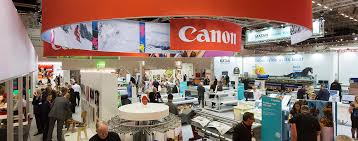
Canon has unveiled plans for its Fespa stand, a 618sqm site which will include its Océ UVgel Colorado 1640, and Océ Arizona series of hardware, alongside robot printing demonstrations, as well as its newest software. They will all be on show at the world’s biggest wide format show which opens its doors in Berlin next month.
The stand will also showcase a live robots workflow, incorporating an Océ Arizona 6170 printer and an Océ ProCut flatbed cutter, with the line producing completed jobs automatically, a process which the company says could potentially run 24/7 without stopping.
“Print as an industry is somewhat behind on automation and this workflow is our contribution to moving that forward,” says applications development senior manager Matthew Faulkner.
“Our new capabilities for the Océ Arizona are for customers who want to differentiate themselves from the competition. Its key applications are high-volume point-of-sale, packaging and décor. We understand from the market that people want these sorts of jobs to have a quality and touch to them that comes from texture.
“This sort of process has always been possible on our Arizona, but only manually. While our customers have gotten good at that, we have an ongoing project working on automating the layering process to significantly higher levels.
“For us this show is about creating a presence that you could not see anywhere else in the world. It gives us a great opportunity to show something a bit different and demonstrate to customers how we can help them increase their productivity, automation and business value.”
The Océ Colorado 1640, and its patented UVgel technology will be a highlight of the company's stand, The UVgel inks have scored seven environmental certifications since being introduced to the market.
The software package expands the textured print capabilities of the UV flatbed Océ Arizona 1200 and 2200 series, and is available as a retrofit for current Arizona owners, as well as being included as an option with new machines.
It uses an automated layering process to generate a textured feel to print jobs.
Comment below to have your say on this story.
If you have a news story or tip-off, get in touch at editorial@sprinter.com.au.
Sign up to the Sprinter newsletter
